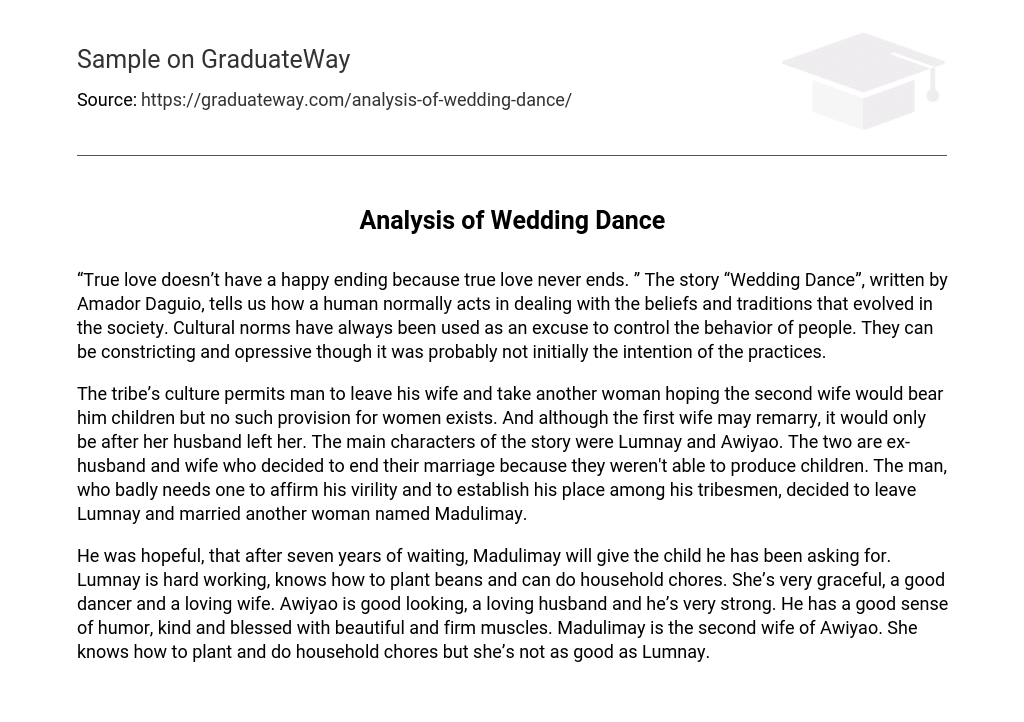“True love is eternal and does not have a happy ending.” The story “Wedding Dance” by Amador Daguio explores how individuals navigate societal beliefs and traditions. Cultural norms are often used as a means of exerting control, even though this may not have been the original intention. These norms can be restrictive and oppressive to individuals.
The cultural norms of the tribe permit men to leave their wives and establish new relationships in order to have children. Conversely, women are not granted the same privilege and can only remarry after being abandoned by their husbands. The narrative centers around Lumnay and Awiyao, who were formerly married but opted for separation due to their inability to conceive. In a bid to validate his fertility and uphold his standing within the community, Awiyao chose to depart from Lumnay and wed another woman named Madulimay.
He was hopeful that, after seven years of waiting, Madulimay would give him the child he had been asking for. Lumnay is a hardworking woman who knows how to plant beans and perform household chores. She is very graceful, an exceptional dancer, and a loving wife. Awiyao is a handsome man who loves his wife dearly and possesses great strength. He also has a good sense of humor, is kind-hearted, and blessed with beautiful and strong muscles. Madulimay is Awiyao’s second wife, and although she knows how to plant and perform household chores, she is not as skilled as Lumnay.





